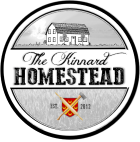Homemade Yogurt
Amy Kinnard2018-10-15T09:43:38-05:00If you own a slow cooker and happen to have some plain yogurt hiding in the back of your fridge along with some milk, you're in luck! You can take the dwindling remains of your yogurt and multiply it into a fresh batch of plain yogurt to be further changed...
Homemade Flour Tortillas
Amy Kinnard2018-10-15T09:43:51-05:00Whether you’re a taco fan, enchilada lover, or breakfast burrito guru, homemade tortillas are the best way to enjoy your favorites and save a little extra in your pocket book at the same time. Or simply make them because you forgot to pick up a pre-made package at the grocery...
Money, Possessions, and Eternity
Tim Kinnard2018-08-20T16:50:21-05:00I have read a lot of material on the subjects of Christian stewardship and general money management. While most have been helpful, none of the resources I've looked at so far have satisfactorily provided as comprehensive a treatment (both theologically and practically) of this important topic as Randy Alcorn's Money,...
What’s Best Next: How the Gospel Transforms the Way You Get Things Done
Tim Kinnard2018-08-21T18:41:12-05:00If you're looking for help with time management and productivity disciplines, I'd encourage you to look into Matt Perman's "What's Best Next: How the Gospel Transforms the Way You Get Things Done." While I have also benefited from some of the market's best-sellers for this genre like David Allen's "Getting...
Lemon-filled Olive Oil Lanterns
Amy Kinnard2025-04-22T19:36:59-05:00After a recent conversation with Tim regarding our winter preparations, I started doing some research on inexpensive types of homemade candles or lamps. Last year we had a horrible snow and ice storm dumping over a foot of snow on the roads and power lines. Our property is at the...

